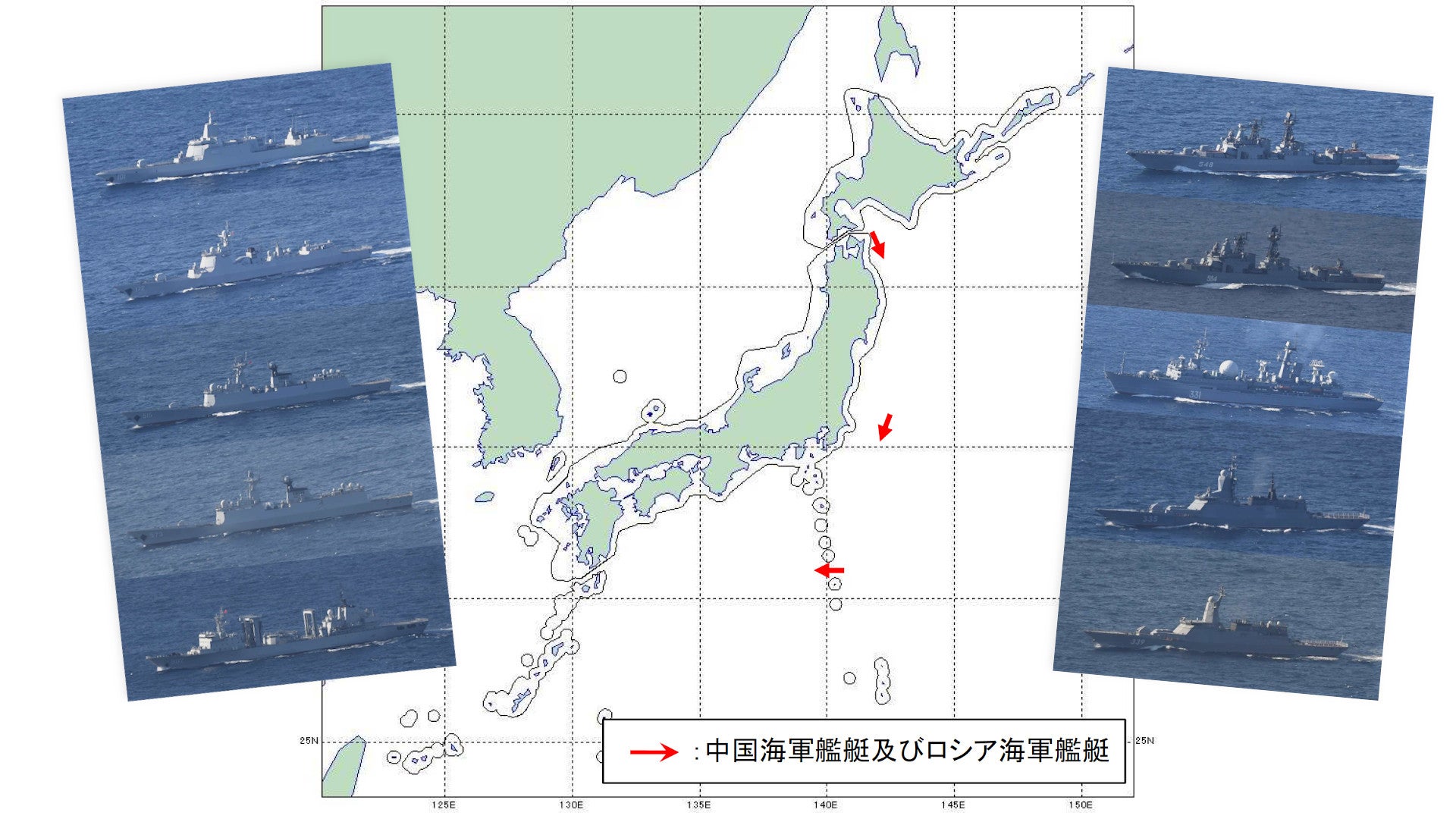A group of 10 Chinese and Russian naval vessels is conducting a joint patrol along a route that increasingly suggests it might take them all the way around Japan’s Home Islands. Even if none of these ships ultimately sail a full loop around the Japanese archipelago, this operation is still a significant display of the ability of these two navies to work together. This all follows a number of major maritime exercises in the Pacific involving the U.S. Navy and its allies and partners — including Japan — this year, as well as multiple instances in which Chinese and Russian naval forces have separately operated unusually close to American territory.
The Japanese Ministry of Defense announced today that it had monitored the Chinese and Russian ships passing west between Smith Island and the island of Torishima, an area situated some 300 miles south of the Home Island of Honshu. The vessels first entered the Pacific Ocean, traveling east through the Tsugaru Strait that separates Honshu and the Home Island of Hokkaido to the north, on Oct. 18, 2021.
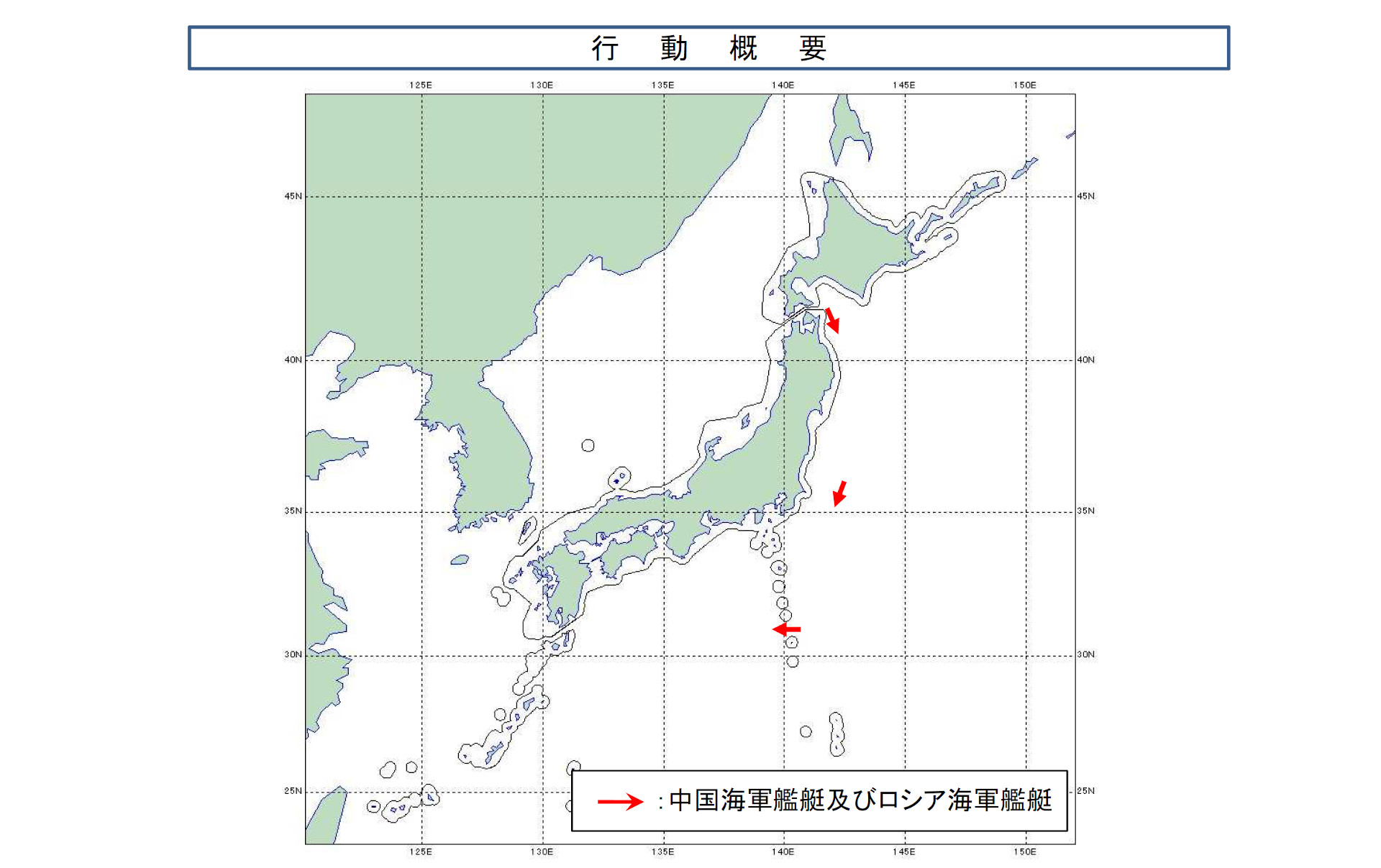
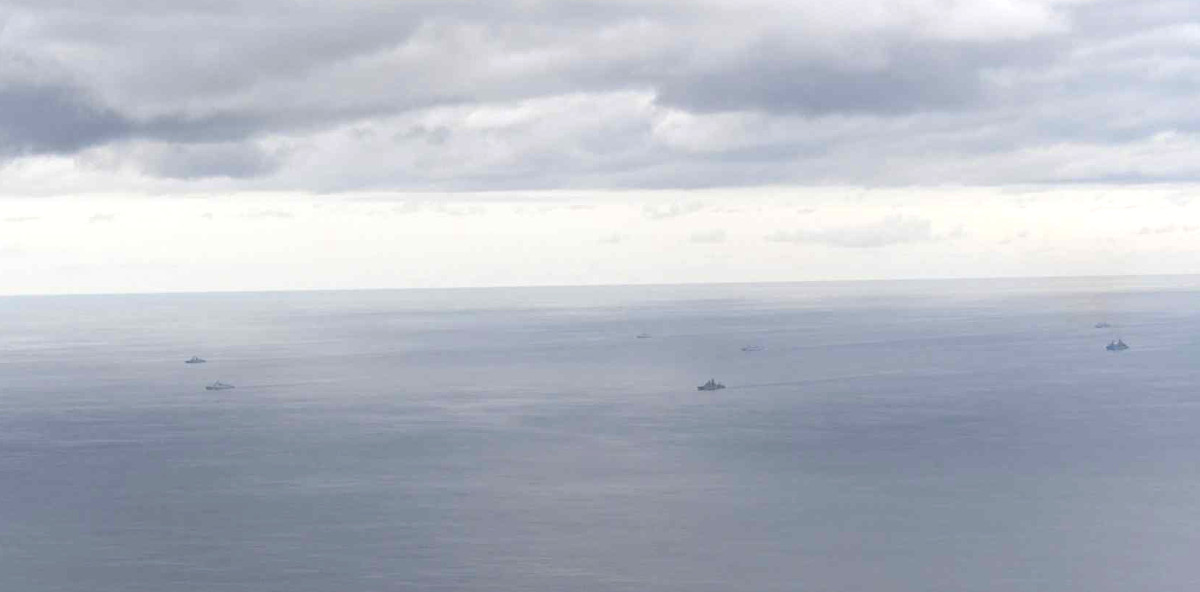
Japanese authorities have said, so far, that all of these ships have remained in international waters throughout the course of this joint operation. This includes their passage through the Tsugaru Strait, which is only around 12 miles wide at its narrowest point. Though a country’s territorial waters can extend out to 12 miles from its coastlines, Japan only claims areas three miles from either shore in this strait, creating an international channel through the middle. This was reportedly done to allow U.S. warships and submarines carrying nuclear weapons to pass through the area without violating Japanese law that bans any introduction of such weapons into the country’s territory.
The flotilla consists of five ships each from the People’s Liberation Army Navy (PLAN) and the Russian Navy. The Chinese contingent includes a Type 055 destroyer, a Type 052D destroyer, two Type 054A frigates, and an at-sea replenishment ship. Two Udaloy class destroyers, two Steregushchiy class corvettes, and what was identified as a Marshal Nedelin class missile range instrumentation ship, make up the Russian contributions.



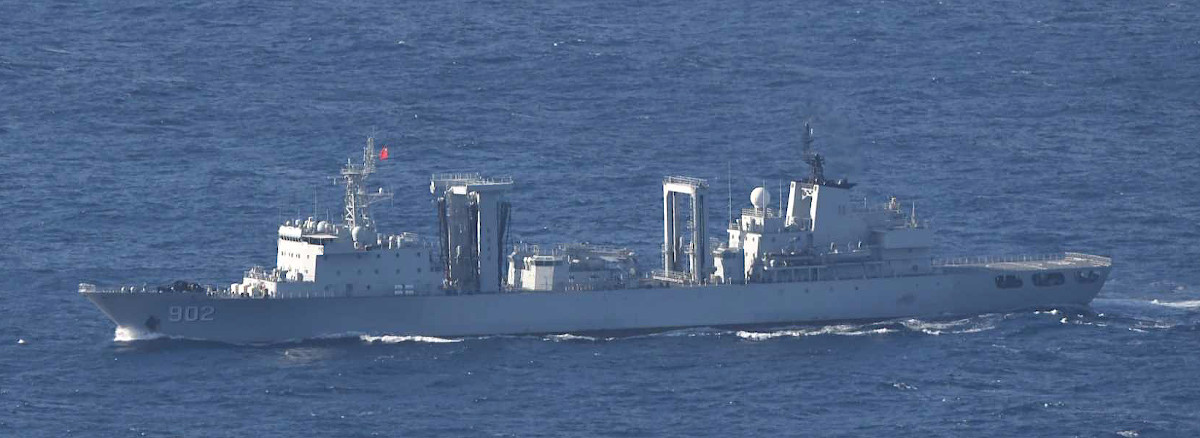
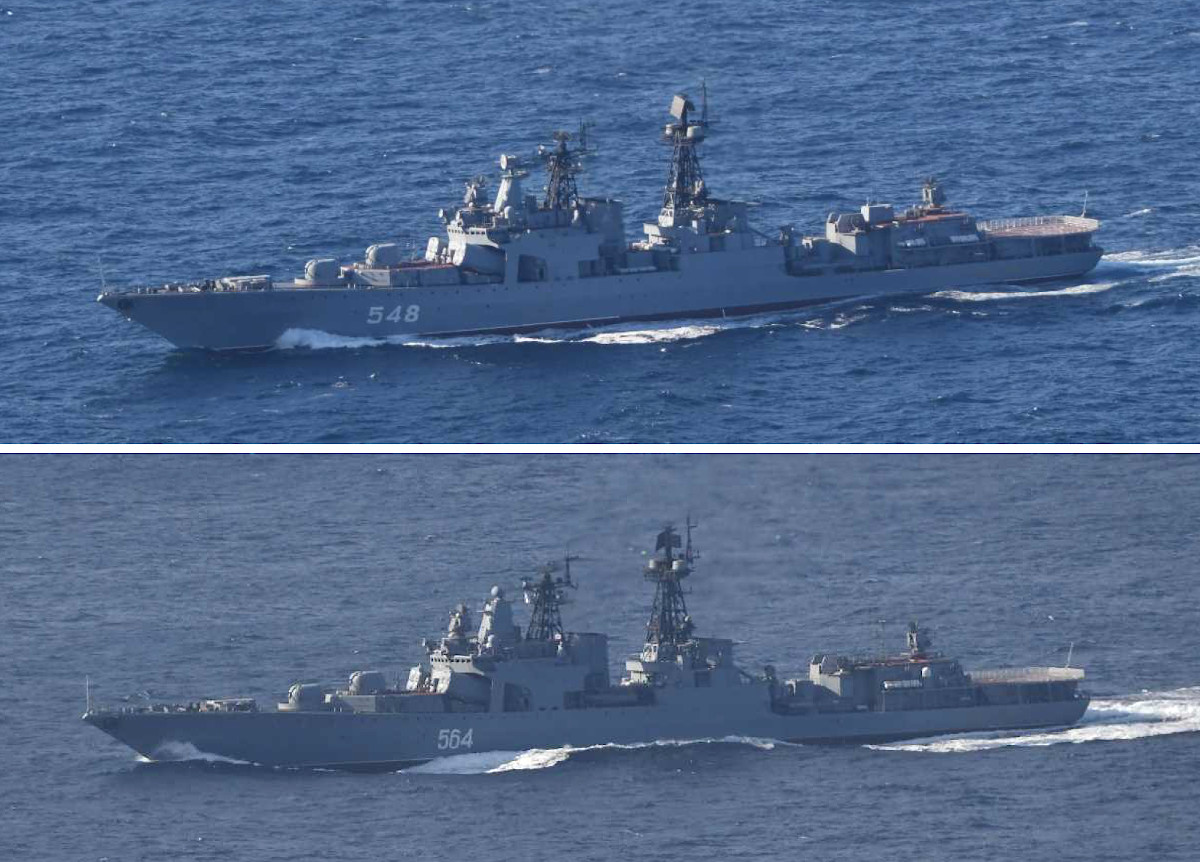
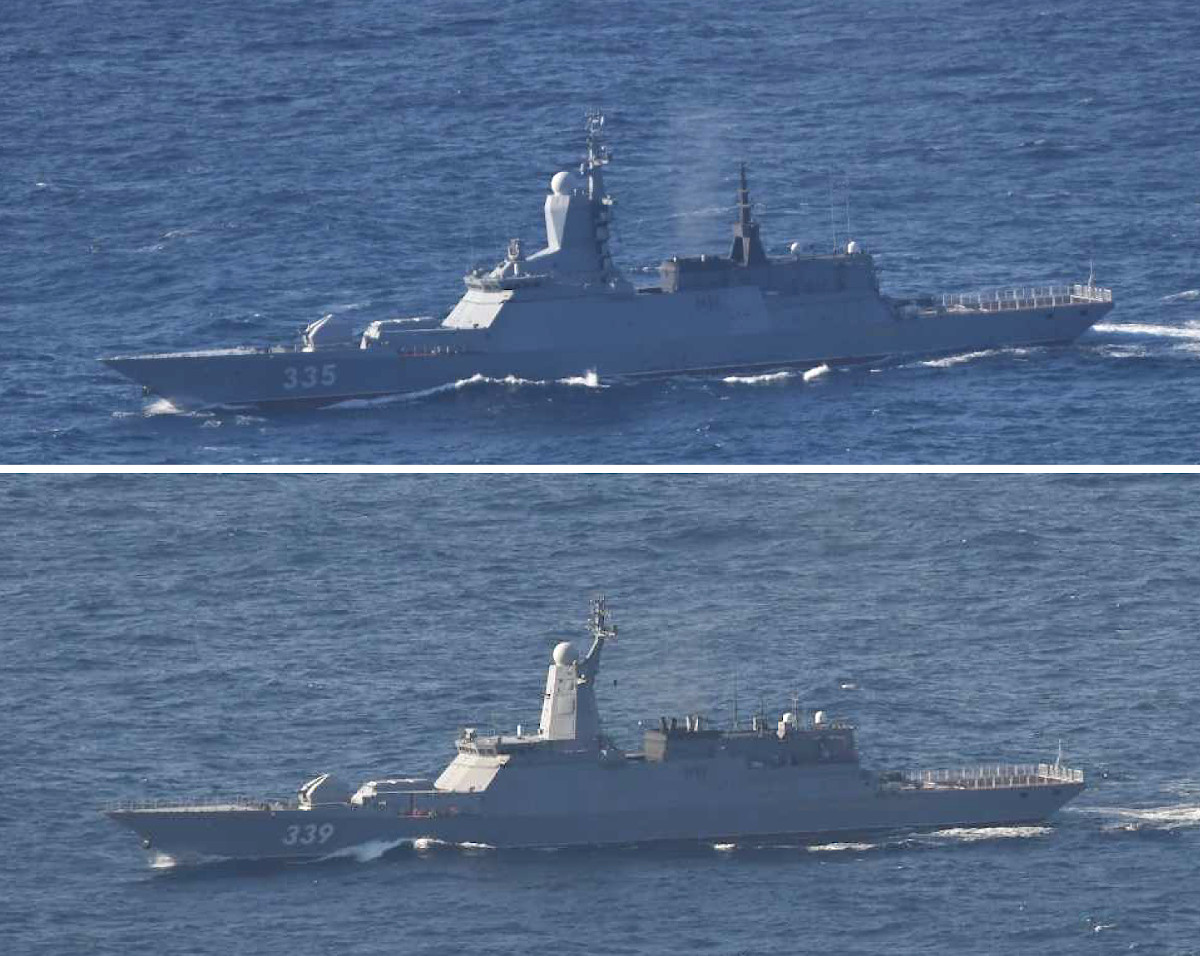

The Marshal Nedelin class ship appears to be the Marshal Krylov, which was originally designed to support the Soviet space program and also had the ability to track and gather data about missile tests but has reportedly now been converted into a command ship. The Marshal Krylov was among the ships from Russia’s Pacific Fleet that conducted a separate series of drills that brought them unusually close to the U.S. Hawaiian Islands earlier this year.
“It is the first time for Chinese and Russian naval ships to sail the Tsugaru Strait together, as you [the media] have pointed out,” Japan’s Deputy Chief Cabinet Secretary Yoshihiko Isozaki told reporters earlier this week after the Chinese and Russian ships passed through that body of water. “The Japanese government has a strong interest in the activities of Chinese and Russian naval ships around Japan, so we are closely monitoring.”
The Japanese Ministry of Defense has said that the destroyer JS Takanami, the lead ship in its class, the Asagiri class destroyer
Yamagiri, and the Sugashima class minesweeper Izushima have been shadowing the Chinese and Russian vessels at various points in their journey. Japanese P-3C Orion maritime patrol planes have also been tracking them. Authorities in Japan also said today that unspecified fighter jets were scrambled after one Russian Ka-27 helicopter and one Chinese Ka-28 helicopter were detected taking off from ships in the group.
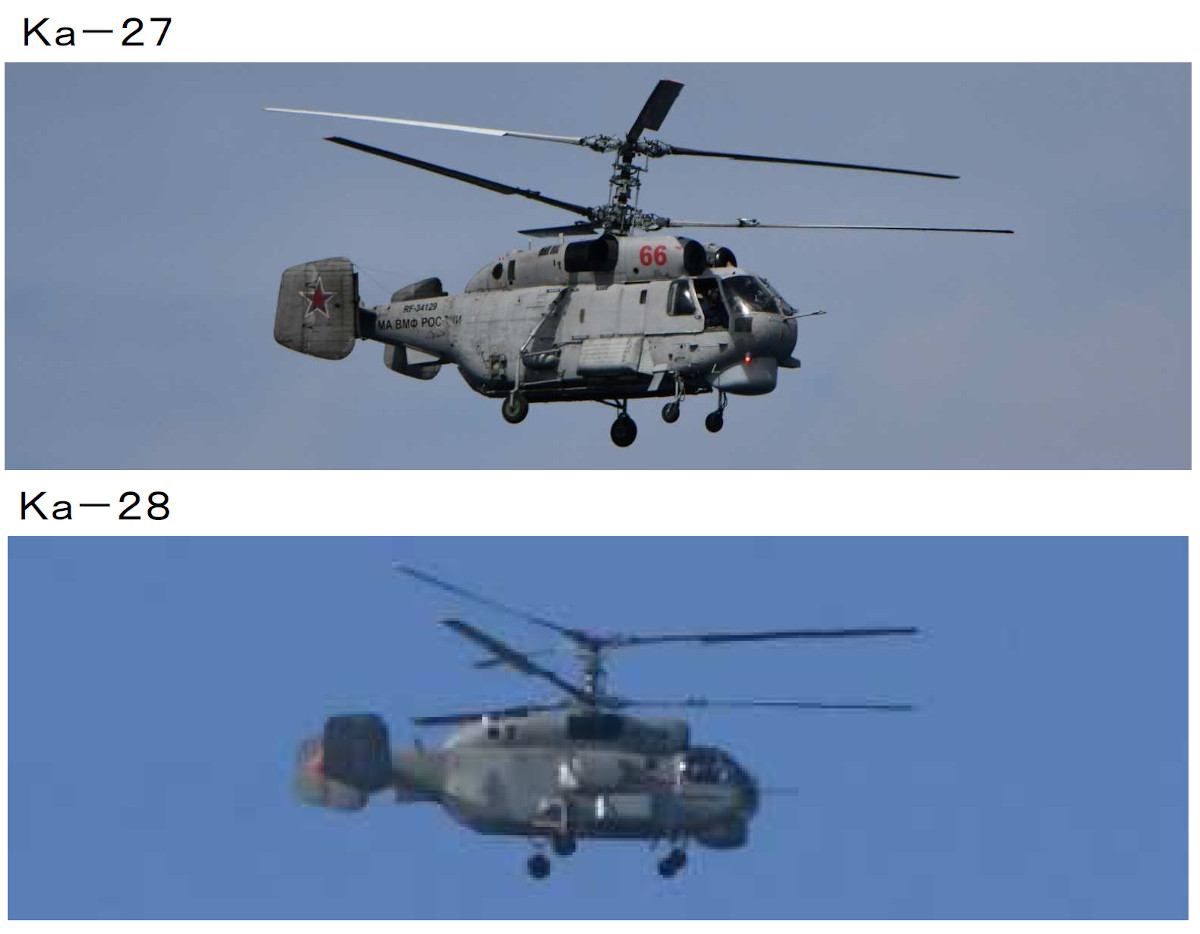
This joint Chinese-Russian naval patrol had immediately followed the conclusion of an exercise involving these ships in the East Sea, which wrapped up on Sunday, the 17th. Those drills had already been an important demonstration of cooperation between these two navies and marked the first time one of the PLAN’s Type 055 destroyers had trained together with foreign warships. The Type 055, which the U.S. military describes as a cruiser rather than a destroyer, is the PLAN’s most modern and capable warship. Each one of these ships has over 100 vertical launch system cells that can hold surface-to-air missiles, as well as anti-ship and land-attack cruise missiles, among other advanced capabilities, as you can read more about here.
Following those drills and the transit through the Tsugaru Strait, Global Times, a newspaper directly controlled by the Chinese Communist Party, ran a story on Oct. 19 that specifically raised the possibility that “the joint task force encircle Japan or approach the US.” It’s worth noting that a different PLAN surface action group that included another Type 055 — as well as a Type 052D, a replenishment ship, and intelligence gathering vessel — had conducted an uncommon cruise near Alaska in September. The Russian Navy, as was already noted, conducted its own drills very close to Hawaii earlier this year and has been increasingly active near Alaska in recent years, as well.
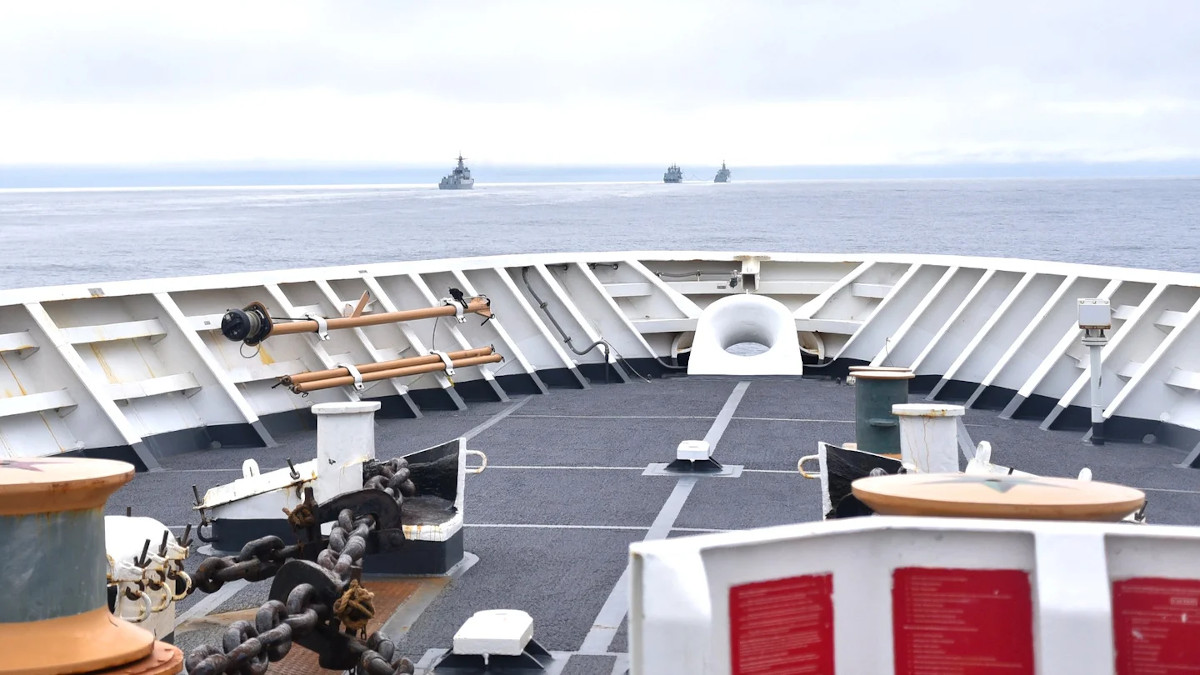
The Chinese and Russian naval vessels currently appear to be headed for the East China Sea, and it looks more and more like they could then turn north and take a trip around Japan’s Home Islands. Circling the Japanese archipelago, which also plays host to significant American forces — including the U.S. Navy’s 7th Fleet — would send a very distinct signal about the ability of China and Russia to work together militarily in support of their own respective national interests. It’s worth pointing out that China and Russia both have significant ongoing territorial disputes with Japan, among a variety of other geopolitical issues in the region.
It also remains very possible that the flotilla, or elements of it, might head in a different direction after entering the East China Sea. Another option might be to turn south and head toward Taiwan, where tensions have been growing between the governments in Beijing and Taipei. On multiple occasions in recent months, the People’s Liberation Army (PLA) has sent dozens of military aircraft on sorties into the southwest corner of the island’s Air Defense Identification Zone. Though these flights have all been in international airspace, the clear goal is to intimidate Taiwanese authorities. There have been a number of Chinese naval exercises near the island that have sent the same general signals, as well. Back in 2016, Russia and China joined together for exercises in the South China Sea that centered on island-seizing scenarios.
There has also been a recent spike in broader geopolitical friction between China and other countries, especially the United States, over the matter of Taiwan, as well as a host of other issues. The U.S. military, which has described China as its “pacing threat” and prime competitor, has conducted its own slew of naval and air exercises in the Pacific Region this year, including a number of recent drills that have involved various allies and partners.
Just last week, American, British, Australian, and Japanese naval vessels and military aircraft joined together for a large-scale training event known as the Maritime Partnership Exercise (MPX). The ships that took part included the U.S. Navy’s Nimitz class aircraft carrier USS Carl Vinson, the Royal Navy’s aircraft carrier HMS Queen Elizabeth, and the Japan Maritime Self-Defense Force’s Izumo class JS Kaga. Carl Vinson and Kaga had also taken part in this year’s iteration of the Malabar exercise, together with ships and aircraft from the Indian and Australian militaries.
Kaga’s participation in these, as well as other exercises, is significant because Japan has long officially described its two Izumo class ships as “helicopter destroyers,” but authorities in the country officially announced the planned conversion of both ships to what will be aircraft carriers in all but name back in 2018. Earlier this month, U.S. Marine F-35B Joint Strike Fighters flew from the deck of the Izumo, which has already gone through the first phase of the conversion process, underscoring the ship’s new capabilities.

Deterring China and otherwise showing solidary with allies and partners in the Pacific have, in general, been the stated reasons for many of these recent U.S.-led exercises in the region. This reflects a broader push in support of these strategic policy objectives on the part of the U.S. government. A new defense cooperation agreement between the United States, the United Kingdom, and Australia, which includes a controversial plan to establish a new Royal Australian Navy nuclear-powered submarine force, is a prime example of these efforts. The deal paves the way for even greater defense and security cooperation between these three countries going forward.
This has all not gone unnoticed by authorities in Beijing and it’s not surprising that they would be interested in conducting a joint naval patrol with the Russians in response. As noted earlier, the two countries have conducted long-range bomber operations together in recent years, including sorites near Japan and South Korea, underscoring growing cooperation between the militaries, in general. U.S.-Russian relations at present are also very cold, which only provides increased incentives for cooperation between Beijing and the Kremlin.
All told, wherever this task force of Chinese and Russian ships may be headed now, it seems likely that we will see more joint naval operations between the countries in the future, especially if the U.S. military and its allies and partners continue to conduct similar activities in the Pacific.
Contact the author: joe@thedrive.com
